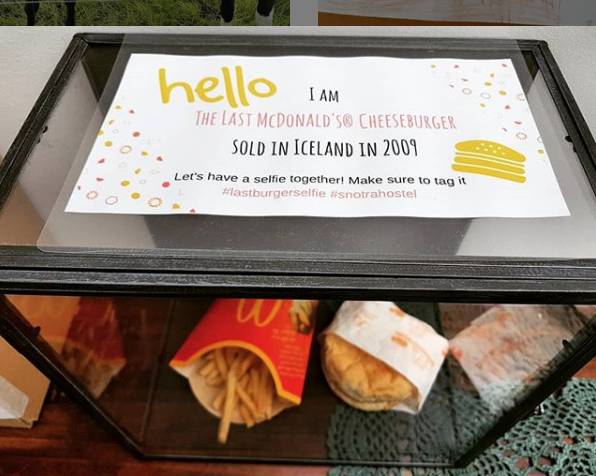Mumbai: In this week's Throwback Thursday segment, we present an ad that isn’t so much of a relic considering it was launched just over a year back. However, the product showcased in the ad - a rotting, aging whopper from Burger King - might qualify as one! It is one of those game-changing ads that make one sit up and rub their eyes in disbelief and ask oneself- Is this for real? But that’s not the only reason this ad features here.
Burger King unveiled a global ad campaign ‘Mouldy Whopper’ in February 2020, aimed at highlighting its commitment to dropping all artificial preservatives from its food products. The ad features a Whopper- one of the signature burgers from the brand- and proceeds to coat it with, believe it or not, mould- layers of it! To say that the Burger King’s ad was a departure from usual food ads would be a gross (in more ways than one) understatement.
Instead of showcasing its food with the classic flawless and often unrealistic, picture-perfect finish- which is the standard norm in fast food advertising, they decided to show the honest, albeit gross reality of natural, ‘free-of-artificial-preservative’ food.
The ad displays a Whopper that looks fresh to start with, and whose components progressively decompose and get engulfed in fungus over a period of time. It depicts this gradual degradation of the burger through a time-lapse video, alongside a date stamp letting you know how long the burger has been exposed to the elements- beginning from day one and concluding at day 34.
The speeded-up action shows the burger deteriorating before our eyes over the course of 30 seconds with intriguingly high-resolution photography. First, the lettuce wilts, then white, fuzzy fungi ravage the meat patty. The burger bun flattens out as the mould spreads all over, and the viewer finds out that the action took place over 34 days. The tagline flashes across the screen: “The beauty of no artificial preservatives”, as it then hits the viewer why the whopper wilts in a matter of hours, going on to rot, decay, and develop grey-green mould in over a month’s span.
The campaign was created through a partnership between three agencies: INGO STHLM, Ogilvy-owned David, and Publicis. It was a far cry from typical food advertising, in which the items are carefully crafted to look as appetising as possible. The idea, of course, was to call attention to the company’s shift away from artificial preservatives and towards a healthier product, even if it came with the tag of ‘junk food’.
The Mouldy Whopper spot accumulated more than 1.7 million YouTube hits within days of its debut. While it left most marketing experts divided, media outlets could not stop breaking the ad down. There were visceral responses on whether the marketing guys at Burger King had lost their minds.
But luckily for the brand, it worked in a counter-intuitive way. It became a talking point, demanded attention, and the central message was also hammered in— that the Whopper grew mouldy because it had no artificial preservatives. The fast-food industry has a reputation of being too processed and full of additives, and this was a welcome departure.
Many of the consumers lauded the brand for its bold but honest and realistic portrayal.
By doing so, the fast-food brand broke all food advertising conventions by marketing its best-selling product in an unappetising, downright disgusting manner. At the same time, such an ad was a huge risk. It could gross loyalists of the brand and turn them off from it.
The work promotes the brand’s pledge to drop all artificial preservatives, which it has accomplished across much of Europe and 400 locations in the US. Plans to have it removed from Whoppers in all the US locations are next on the cards for the brand.
The campaign also seemed to take a cheeky dig at its chief rival, despite never mentioning McDonald’s in the campaign. McDonald's has come under fire several times in the past for how its food doesn't appear to decompose as one would expect.
 Whether the ad and the shift away from artificial preservatives will work to accomplish Burger King’s ultimate goal—selling more Whoppers—remains to be seen.
Whether the ad and the shift away from artificial preservatives will work to accomplish Burger King’s ultimate goal—selling more Whoppers—remains to be seen.
Burger King’s CMO Fernando Machado has this to say: “No one in our office was expecting consumers to jump in the car and drive desperately to Burger King to buy a Whopper just because we removed artificial preservatives. The main objective of the Mouldy Whopper campaign was not to drive short-term sales.”
“It is the right thing to do and we don’t see a future where fast food brands will have artificial preservatives. So, by getting there first, we are making our brand future-proof. And, hopefully, in the long run, this will not only help with sales but mostly avoid the brand becoming irrelevant," he added.
So, was the chain’s controversial mouldy whopper ad a winner? Well, if this year’s Cannes fest is any indicator then it’s a whopping YES for the whopper. The campaign premiered at the recently concluded Cannes Lions International Festival Of Creativity achieving no less than three Grand Prix in the Outdoor category, Retail subcategory. Three posters of the campaign won Grand Prix each, in addition to their correspondent Golden Lion.
But, of course, all that would be a moot point if the communication would have been lost to the ones who matter most - the consumers. Yes, one needs to push hard at the boundaries sometimes, even tear it down to be noticed and become relevant. As a wise guy once said, “If no one notices your advertising, everything else is academic”
CREDITS
CLIENT: Burger King
AGENCY: Ingo, David Miami, Publicis
Executive Creative Director: Björn Ståhl
PRODUCTION
COLONY (Production company)
Producer: Lena von der urg
MUSIC: “What A Difference A Day Makes” by Aretha Franklin






